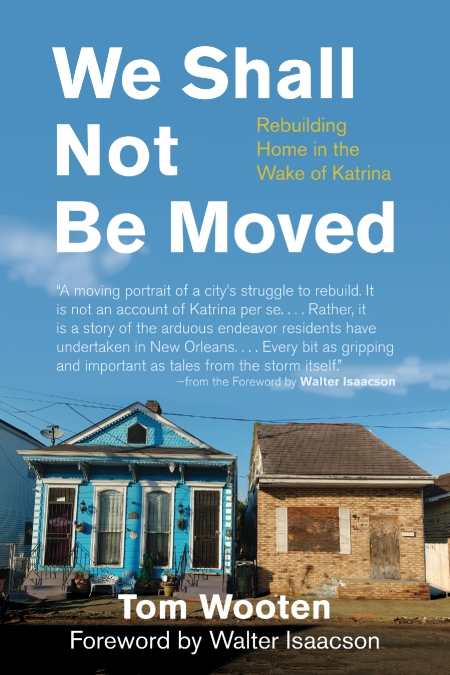We Shall Not Be Moved
Rebuilding Home in the Wake of Katrina
The recent memories of many Americans are seared with images of a devastated, storm-and-flood-ravaged, and desperately savage New Orleans. In the wake of these unforgettable pictures, however, most Americans moved on with their day-to-day lives and missed watching this great Southern city make its slow climb to recovery.
Tom Wooten didn’t miss it. He moved to New Orleans after the storm and has seen the perseverance and progress firsthand. He shares what he’s seen though the voice of the city’s people in We Shall Not Be Moved.
Wooten’s book is a hopeful look at the disaster and recovery of Katrina-struck New Orleans, focusing on community leaders, neighborhood by neighborhood. It begins with the storm itself, recounting the evacuation, damage, and fear. Next, Wooten shows the grueling first year after the storm, and, finally, the continuing recovery efforts. While he doesn’t shy away from calling out governmental failures, small and large, it’s clear to readers that the focus is on the city’s heroes, not its enemies.
The book dwells on five neighborhoods: Village de l’Est, Hollygrove, Lakeview, Broadmoor, and the Lower Ninth Ward. In each region, Wooten has spent time with and interviewed citizens and community leaders. He truly captures the voices of these places and resists spoiling the research by editorializing.
Readers meet people like Father Vien, who visited his parishioners scattered across the south; Phil Harris, who trekked across a deserted town each day to gut and repair his house; Bari Landry, who snuck past the National Guard in combat boots to see the damage to her neighborhood; and more. These dire images give way to stories of community leadership and the slow-but-sure trek toward recovery. Neighbors and citizens work together to feed, clean, and rebuild—and they succeed in not just getting by, but creating effective small governments and neighborhood-run charter schools.
The foreword is by Walter Isaacson, a NOLA native who served as vice chairman of the Louisiana Recovery Authority after the storm. The back matter features a detailed timeline from 2009 to 2011. In the front of the book there is a simple yet effective map that includes the neighborhoods discussed.
Wooten, an uncommonly dedicated transplant to the city, weaves a work of intellect and heart and accomplishes a vivid, raw, sincere, and very readable work of research.
Reviewed by
Melissa Wuske
Disclosure: This article is not an endorsement, but a review. The publisher of this book provided free copies of the book to have their book reviewed by a professional reviewer. No fee was paid by the publisher for this review. Foreword Reviews only recommends books that we love. Foreword Magazine, Inc. is disclosing this in accordance with the Federal Trade Commission’s 16 CFR, Part 255.

